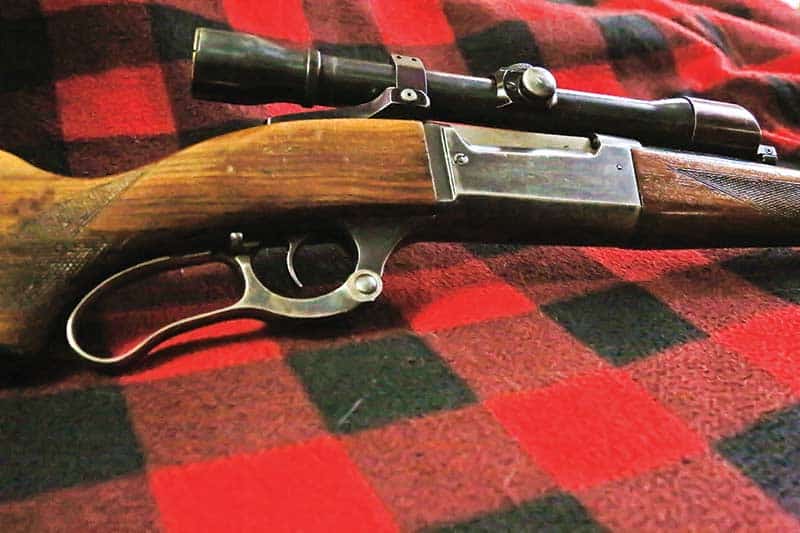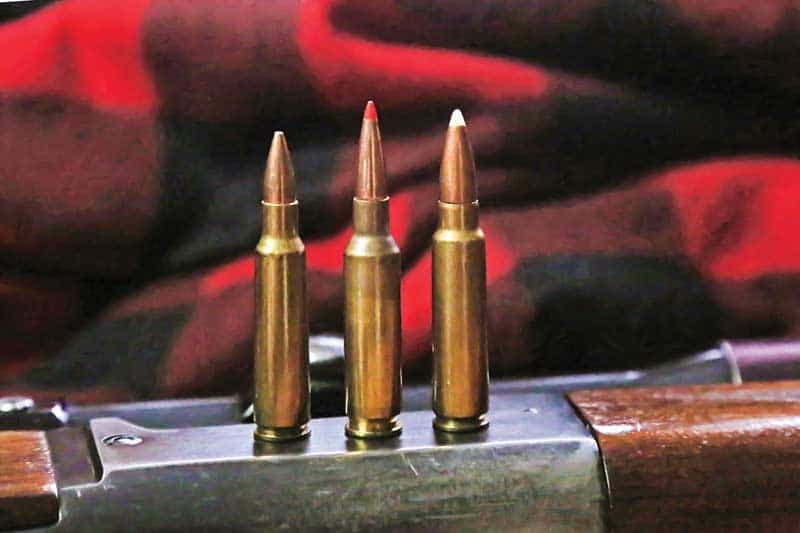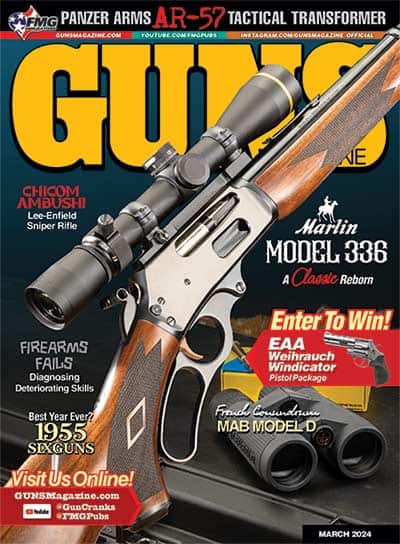The .300 Savage
A Classic Ahead Of Its Time
Arthur Savage (1857–1938) was a remarkable and restless man. He developed a lever-action rifle that was far ahead of its time — the Model 1895 and its improved version, the famous Model 1899. It featured a hammerless design, a rotary internal magazine compatible with spitzer bullets and a receiver well-adapted to scope use, though it would be half a century before scopes became widely used.
History
Total production numbers are uncertain but serial number 1,000,000 dates to 1960. In the first half of the 20th century, the 99 was tremendously popular with American big game hunters. After 1960, demand tapered off due to a number of factors — magnum cartridges, inexpensive military surplus rifles, the growth of reloading and the dominance of bolt-action hunting rifles.
Savage Arms had four proprietary cartridges. The .303 Savage was ballistically similar to the .30-30 Win. though generally with heavier bullets. Charles Newton, another eccentric genius, developed the .22 Savage High Power and the .250-3000 Savage. The .300 Savage was apparently developed by Savage designers. It was first offered for sale in late 1920 in the Savage 99 and the bolt-action model 1920. By this time Arthur Savage had sold his interest in Savage Arms and moved on to other ventures.
In this era, the .30-’06 was by-far the dominant American hunting cartridge and Savage Arms intended the .300 Savage to provide .30-’06 level performance. It kind of did if you use as a comparison the ’06 military load, which at the time was a 150-grain bullet at 2,700 fps. At 2,700 fps, the Savage was going flat out while the ’06 was loafing. Like other reloaders, I found it easy to get 2,900–2,950 fps with the ’06 even in 22″ barrels, and over 3,000 fps in 24″ barrels.
Savage designers met their goal of getting maximum results from a case that would fit and function in the Model 99. The .300 Savage is a remarkably modern case: 30-degree shoulder, short neck (0.221″), 1.871″ length overall and water capacity of approximately 52 grains. Compare these figures to 2007’s 6.5 Creedmoor which has a 30-degree shoulder, 0.285″ neck length, 1.920″ length overall and water capacity of 52.5 grains.
Factory .300 Savage cartridges claimed the 150-grain bullet at about 2,700 fps and the 180-grain at 2,400 in 24″ barrels, but both claims are a bit optimistic. In addition to the Model 99, Savage offered the .300 Savage in its short-action 1920 bolt rifle and Winchester even chambered the model 70 in .300 Savage. Since the standard-length action was also available in .30-’06, very few model 70s were ever made in .300 Savage, ironically making them valuable collector items.
Post-War
After WWII, Remington offered the .300 Savage in several models — the Model 81 semiautomatic, Model 760 Gamemaster pump and the Model 722 bolt-action. Personally I think the 722 short-action and the .300 Savage cartridge go well together. If I found a nice one for sale at the right price, I might buy it. Still, the Savage 99 and the .300 Savage cartridge go together like duck and green peas. As a pre-teenager in the 1950s, I knew several old-timers — anyone 40+ — whose big game rifle was a Savage 99 .300. They were considered to be expert and discriminating riflemen.
From the mid-’50s and into the ’60s, other modern lever-actions appeared including the Winchester 88, Sako Finnwolf and Browning BLR. The .308 Winchester, commercial version of the military 7.62×51, pretty much buried the .300 Savage. But, for many an old-timer such as me, the Savage 99 as made prior to 1960 remains a high-water mark in sporting rifles.
Sight-in
Savage began drilling and tapping the Model 99’s front receiver ring for scope bases in the early 1950s. Many earlier models were D&T by gunsmiths. It is easy to recognize factory versions as the Savage 99 logo was moved from the top of the receiver to the side. I’ve seen many an early 99 with the Savage logo on top of the receiver defaced by drilling and tapping. To me it is like seeing holes drilled in original Marlin 336 waffle tops. I understand it increases utility and an owner can do as he likes with his own property, but it still makes me gag a little. I much prefer a no-drill Stith mount on early model 99s, though I concede they are getting expensive and hard to find.
One hears rumors of a Savage 99 rebirth and I suppose with modern CNC equipment it could be done. I doubt it will happen because whatever model was made, buyers would want something else. “How could they make the model EG, I want a 99R! No, a Featherweight! A 99A! A takedown!” And, with well over a million made, there are enough used models to keep us old-timers busy.





